Terpstra: The whole race was a big gamble
Dutchman seizes chance to claim solo win at E3 Harelbeke
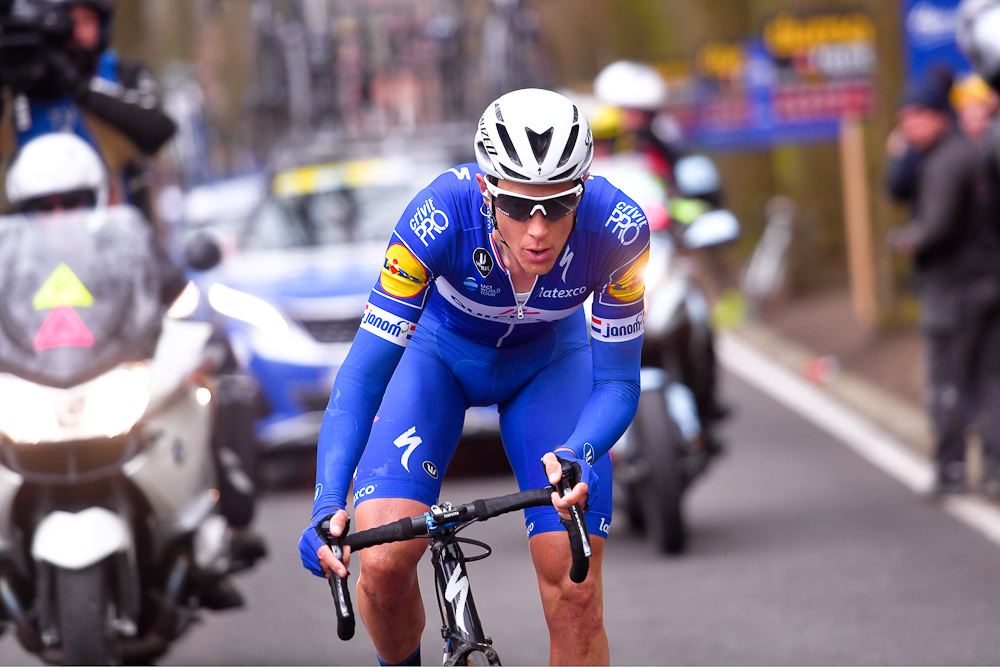
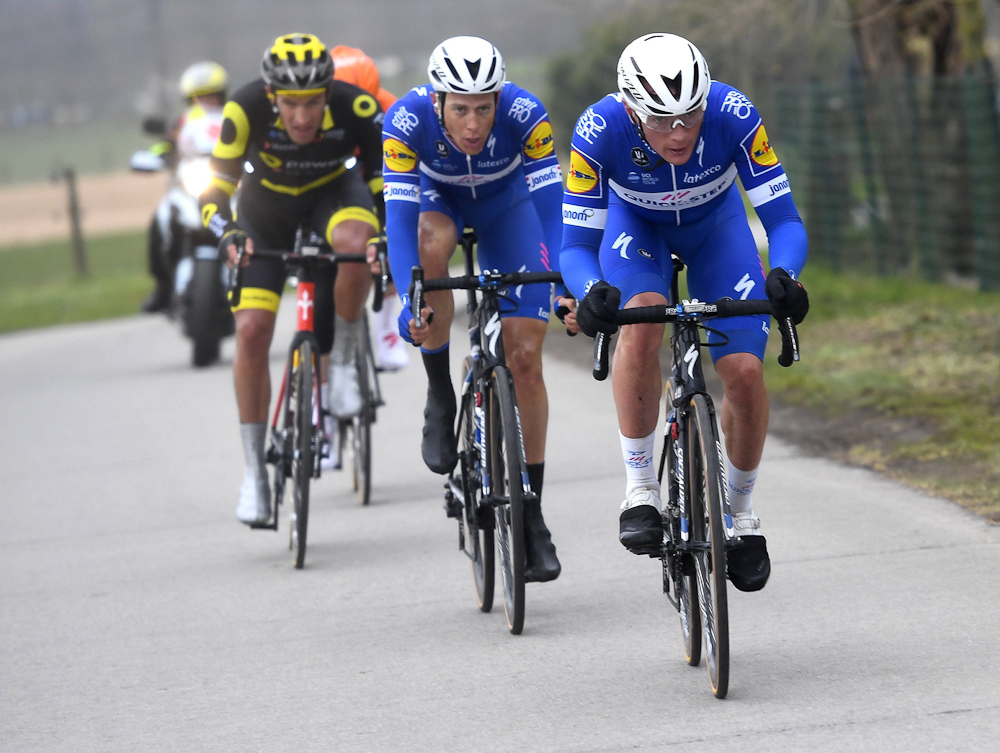
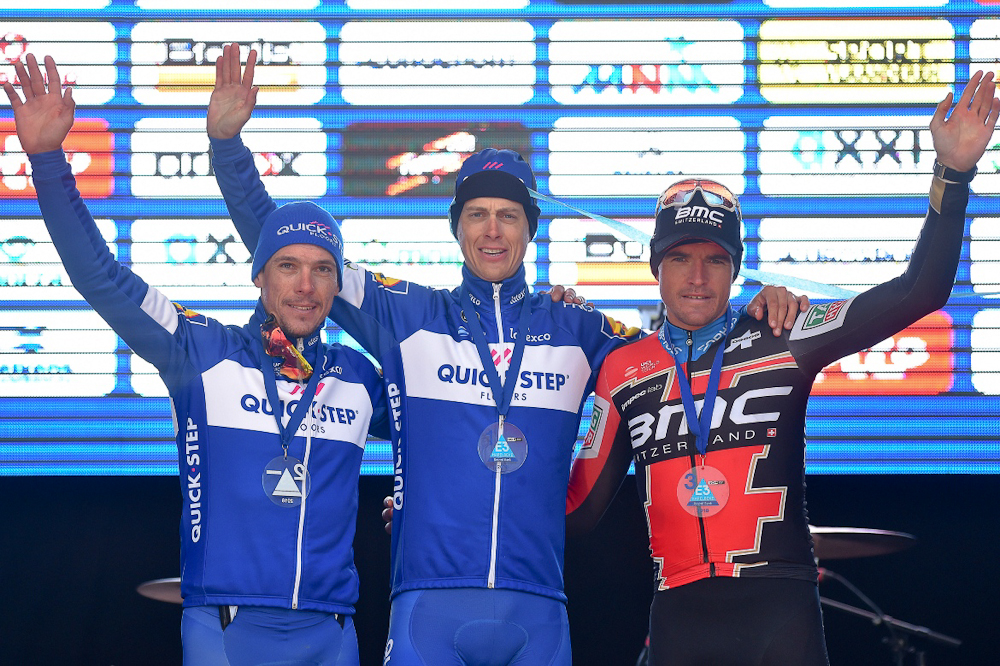
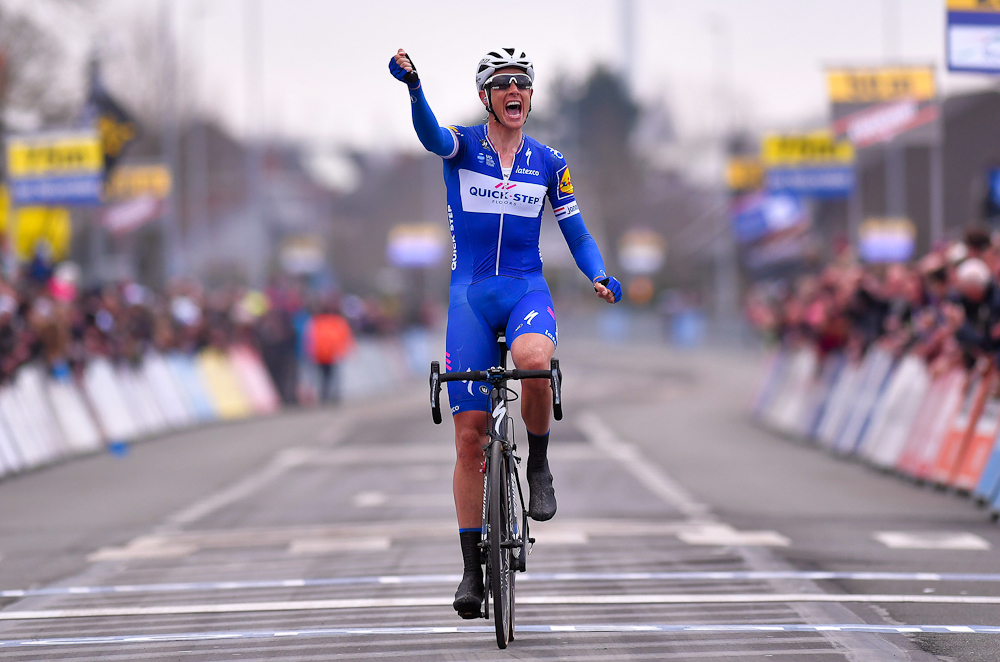
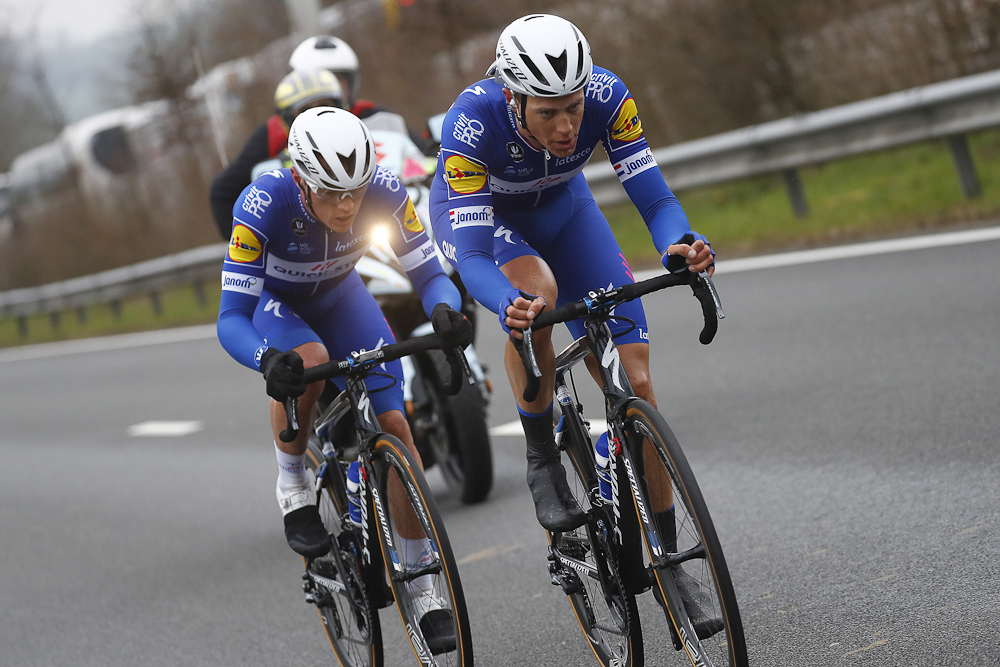
On and off the bike, Niki Terpstra (Quick-Step Floors) tends to carry himself with a swagger that suggests he has never once wanted for confidence, but after soloing to victory at E3 Harelbeke, the Dutchman confessed that his self-assurance had taken a blow during a 2017 campaign plagued by crashes and ill fortune.
Victory at Le Samyn three weeks ago seems to have restored Terpstra to his brio of old, however, and at Harelbeke, he paired tactical nous with brass neck to claim a fine solo win ahead of his Quick-Step teammate Philippe Gilbert and an elite group of chasers.
As if to prove the point, Terpstra rapped the lyrics of Dutch performer Jebroer during his post-race interview with Sporza. "I do not like apple, I do not like kiwi, I want to go with that banana [go bananas]," intoned Terpstra, who was mercifully more coherent when he took a seat in the press room near the finish in Harelbeke.
"It's a pretty big one, especially now that I've seen the results," Terpstra said. "Last year was a shit year but that's the past. I was actually crying a bit after the finish of Le Samyn, because that was for me the point I could say I was back. I was never gone but at that moment, I was back. I've always been confident but if you take a win, even if it's a small race, it gives you even more confidence."
It certainly takes considerable belief in one's own strength to go on the offensive with over 70 kilometres remaining, as Terpstra did in the company of teammate Yves Lampaert here. The two were at the head of the Quick-Step cohort that set a stinging pace on the Taaienberg – their old captain, Tom Boonen, would have approved – and when they opened a small gap over the summit, they opted to press on.
"We got into the situation; we didn't plan it exactly like this," Terpstra said of his two-up attack with Lampaert. "But last year, the winners also came from a long, long breakaway after the Taaienberg."
Quick-Step had already been piling on the pressure before the Taaienberg, having hit the front en masse 30 kilometres earlier on La Houpe, and they didn't relent when a mass crash over the top split the peloton. Terpstra gently rejected the idea that they should have waited for men like Oliver Naesen and Sep Vanmarcke who were caught behind.
Get The Leadout Newsletter
The latest race content, interviews, features, reviews and expert buying guides, direct to your inbox!
"We heard there was a crash behind and we were only with 40 riders, so then it's an opportunity to keep the pace on and keep on going. It's pretty hard but that's cycling," Terpstra said. "We didn't make them crash. Crashing is the worst part of cycling, I think, but it is a part of cycling. We did the acceleration and then they crashed. Should we stop our acceleration because of the bad luck of others? I don't think other teams would wait for us."
Gilbert's pursuit
Terpstra and Lampaert soon stretched their advantage out to 45 seconds, and their attack handed the tactical advantage to Quick-Step for the remainder of the race, with Gilbert, Zdenek Stybar and Florian Senechal carefully policing the lattice of counter-attacks that were forming and unravelling behind.
The most notable chase effort came from Greg Van Avermaet (BMC) and Tiesj Benoot (Lotto Soudal), but they were marked closely by Philippe Gilbert, who was, in turn, being pulled ever closer to his teammates ahead. On the steep Karnemelkbeekstraat, Gilbert unleashed the inevitable acceleration that took him clear of Van Avermaet and Benoot, and it briefly looked as though he was going to bridge across to Terpstra and the flagging Lampaert in the final 30km.
Rather than wait for the fast approaching Gilbert, however, Terpstra and Lampaert's intensity seemed only to ratchet upwards over the other side of the climb. The gap, which had fallen to 15 seconds, began to yawn open again thanks to a long turn from Lampaert, and Gilbert opted to cease his pursuit.
Now in his eighth season at Quick-Step, Terpstra, winner of Paris-Roubaix in 2014, is keenly aware that a man often needs to carve out his own opportunities on a team with so many options in the cobbled Classics, but he denied that he was aware of Gilbert's attempt to join them.
"I heard a lot of things on the radio, but there were so many people on top of the Karnemelkbeekstraat that I only heard noise on the radio but I couldn't understand what they were saying," Terpstra said. "I knew something was going on and the group was closing in because I saw the time gap on the big screen at the top. I said, 'Fuck, we had half a minute and now it's only 15 seconds, so now we have to go full throttle.'"
That surge was to be Lampaert's final act on the front, as he could no longer follow Terpstra's pace on the cobbles at Varentstraat. The Dutchman had already waited for Lampaert on the two preceding climbs, but faced the final 20 kilometres and the ascent of the Tiegemberg on his own. The chasing group swelled behind, and Terpstra's lead dropped precipitously on a headwind stretch on the exposed road to Harelbeke, but he righted the ship on the final approach to win by 20 seconds. Gilbert beat Van Avermaet in the sprint for second.
Asked if it had been a gamble not to wait for Gilbert, Terpstra's face creased into a smile. "I think the whole race was a big gamble," he said.

Barry Ryan was Head of Features at Cyclingnews. He has covered professional cycling since 2010, reporting from the Tour de France, Giro d’Italia and events from Argentina to Japan. His writing has appeared in The Independent, Procycling and Cycling Plus. He is the author of The Ascent: Sean Kelly, Stephen Roche and the Rise of Irish Cycling’s Golden Generation, published by Gill Books.